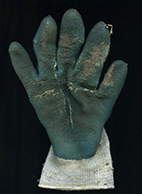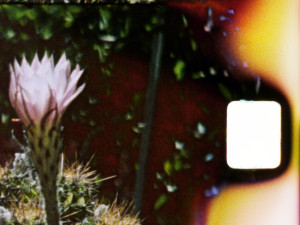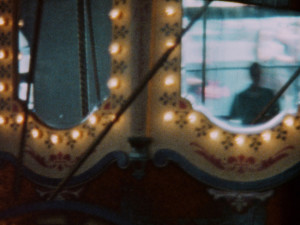Now available: new work and new digital exhibition files from Janis Crystal Lipzin
Posted November 18th, 2019 in New Acquisitions, New Films, News / Events
Janis Crystal Lipzin has been called “one of the key American media artist of this era” and has been making art in
virtually every form of reproducible media for nearly forty years. Lipzin taught Film and Interdisciplinary Studies at the renowned San Francisco Art Institute from 1978 to 2009 where she served as Chair of the prominent Film Department.
Lipzin’s new work Las Manos from 2017, as well as digital exhibition files of Deluce 1: Vegetare (2009) and Micro Celluloid Incidents in 4 Santas (2012) are now available from Canyon Cinema

Las Manos (2017 | 4 minutes | COLOR | SOUND)
Las Manos uses images of well-worn farmworkers’ gloves to expose the indispensable physical effort that agricultural laborers perform to bring food to our tables.Las Manos (Visible Inventory 11) is the most recent film in the artist’s 40-year Visible Inventory series in diverse media.

De Luce 1: Vegetare (2009 | 5 minutes | COLOR | SOUND)
This work delves deeply into experiments similar to my parallel work in color photography. In this film, I blend my enduring interest in nature’s volatile events with my sympathy with film’s unpredictable response to light. I make a conscious decision to begin with film based on that medium’s unduplicable and capricious reaction to photo-chemical stimuli. I use darkroom processes to produce outcomes that allude to, but don’t truly describe, color in the natural world. I then interweave the results with the more controllable properties of digital technology. By using both digital and analog tools, I am able to achieve results unattainable by either medium alone. My methods allow me to avoid many conventional industrial processes and vastly expand the boundaries of common color palettes. — JCL

Micro-Celluloid Incidents in 4 Santas (2012 | 10 minutes | COLOR | SOUND)
The flow of time & unseen human relationships are exposed at public amusement facilities in 4 California towns.
The title is a reference to Ray Birdwhistell’s ground-breaking anthropological study from 1971, Micro-Cultural Incidents in 10 Zoos in which he employed a “perceptiscope” as a cinematic microscope. 4 Santas utilizes digital tools to interrogate film, and in so doing, to investigate meaning. What can be shown and what can be known? — JCL


